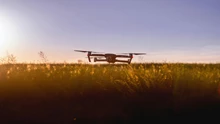
Locusts are insects belonging to order orthoptera. These are short-horned grasshoppers with highly migratory habits, marked polymorphism and voracious feeding behaviour. They are capable of forming swarms (adult’s congregation) and hopper bands (nymphal congregation). They cause great damage to natural and cultivated plants. There are ten most important species of locusts in world, but only four among them are of concern to India, i.e., desert locust (Schistocerca gregaria), migratory locust (Locusta migratoria), bombay locust (Nomadacris succincta) and tree locust (Anacridium sp.).
Indian scenario –
In India, around two lakh square kilometers of region is designated as Scheduled Desert Area (SDA), mostly comprising of areas in following states, Rajasthan (1,79,250 km2), Gujarat (23,077 km2) and Haryana (3,457km2). During recession periods, locusts occupy area ranging from Atlantic ocean to North-west India. Attacks are in phases known as Plague cycles.
From past many years the situation of locusts is under control and no significantly devastating swarms are observed. But, despite our technological advancement and contingency plans, infestations are observed in Gujarat and Rajasthan from time to time.

Know Locusts –
Among all locusts, the Desert locust is of main concern to India. Locusts life cycle comprises of three life stages, i.e., egg, hopper and adult.
. Eggs – female lays eggs in moist sandy soil at depth of 10-15 cm. Incubation period is around two weeks.
. Hopper – pass through five instars before becoming an adult. This stage lasts for six weeks.
. Adults – adult phase lasts for four weeks and divided into three phases, i.e., fledgling, immature and mature.
Total life cycle is completed in twelve weeks.
Locusts phases –
Solitary (inert) and migratory/gregarious, are the two phases in which locusts are found.
1. Solitary phase
At this phase they do not form swarms and are found as individuals. Female lay 3-4 times having 150-200 eggs/ pod. Solitary adults fly for few hours at night.
2. Gregarious phase
Form persistent bands and cohesive groups. Adults migrate during day time in swarms while hoppers move in bands. Female lays 2-3 egg pods having 60-80 eggs/ pod. On maturation gregarious adults become bright yellow.
Gregarious adults (swarms) can migrate in direction of wind and cover around 150km/ day. All countries affected with desert locust generally adopt preventive control strategy. Locust Warning Organization (LWO), Jodhpur undertakes regular surveys in scheduled desert areas to monitor presence of desert locust.

Economic threshold level for locusts is 10,000 adults/ ha or 5-6 hoppers/ bush.
Due to congenial breeding conditions during May to November, immediate control measures are initiated during this period, if any increase in number is observed. Malathion 96% ULV is used for desert locust control in India. Standard operating procedures (SOPs) are provided by FAO to carry out survey studies and initiate control measures for desert locusts at international level.
Implementation of Locust control measures (Source: DPPQS, Faridabad) –
Locust unit at Directorate of Plant Protection, Quarantine and Storage, Faridabad, in consultation with LWO, Jodhpur monitor the global ecological conditions and any important information regarding emergency is updated with FAO - Desert Locust Information Service, so as to initiate a coordinated action by all stake holders. Steps involved are:
. Locust reporting
. Survey studies
. Deployment of control teams
. Data recording in eLocust3.
. Evaluation of control measures
. Planning of locust control and survey work for next day










